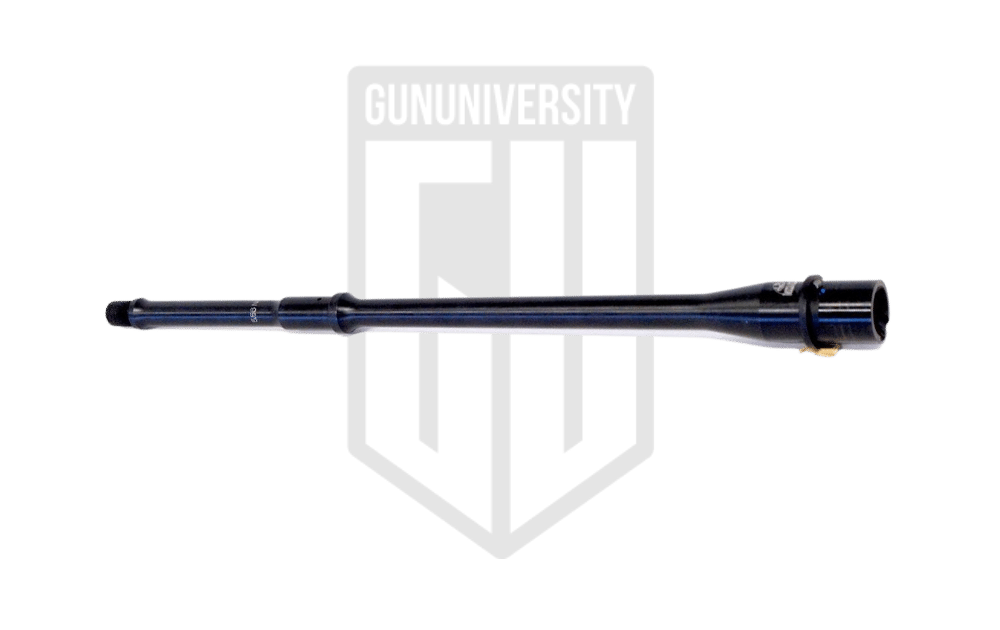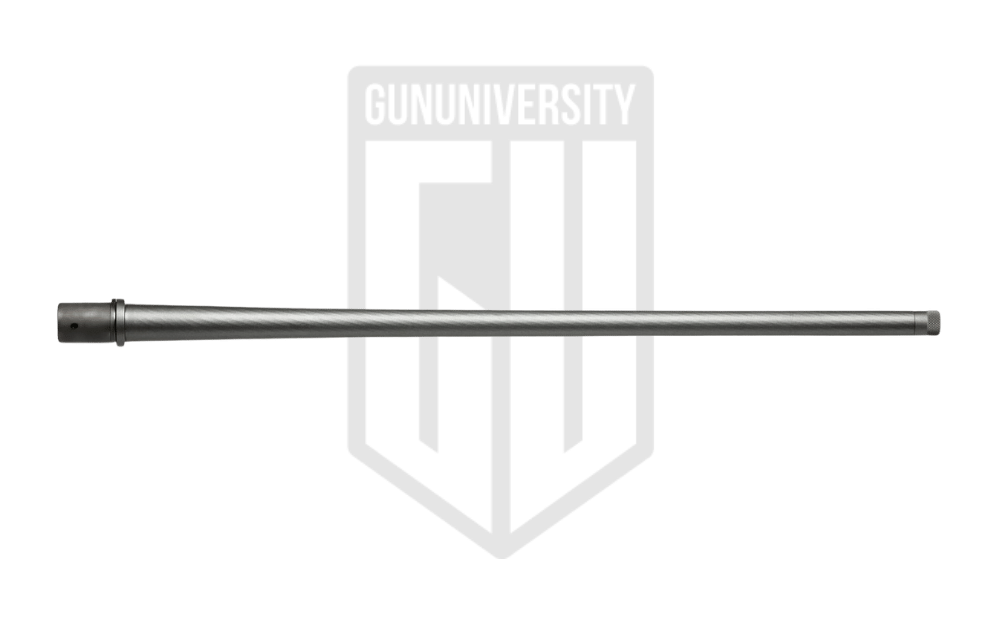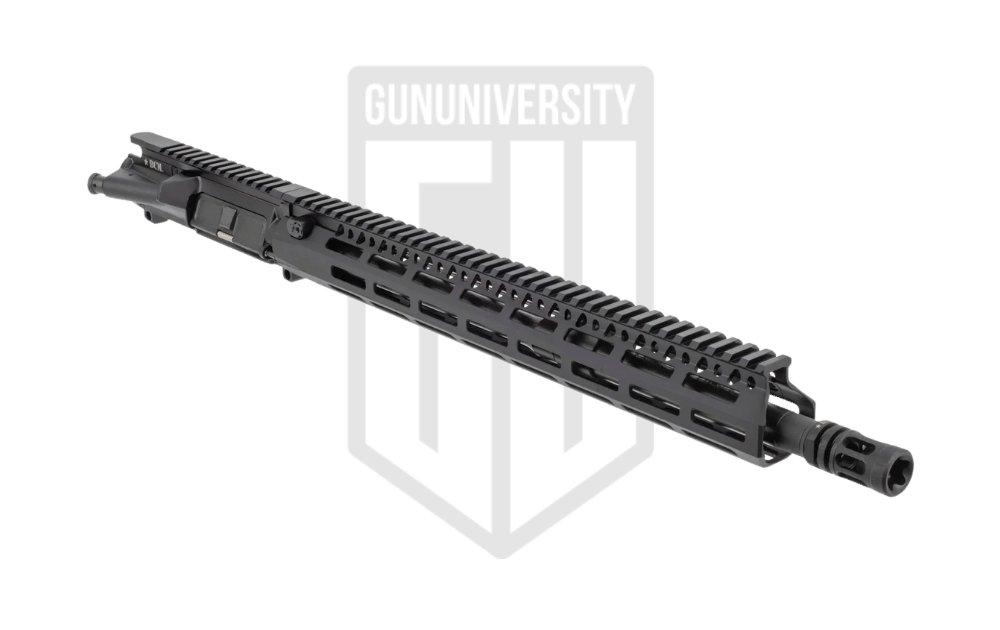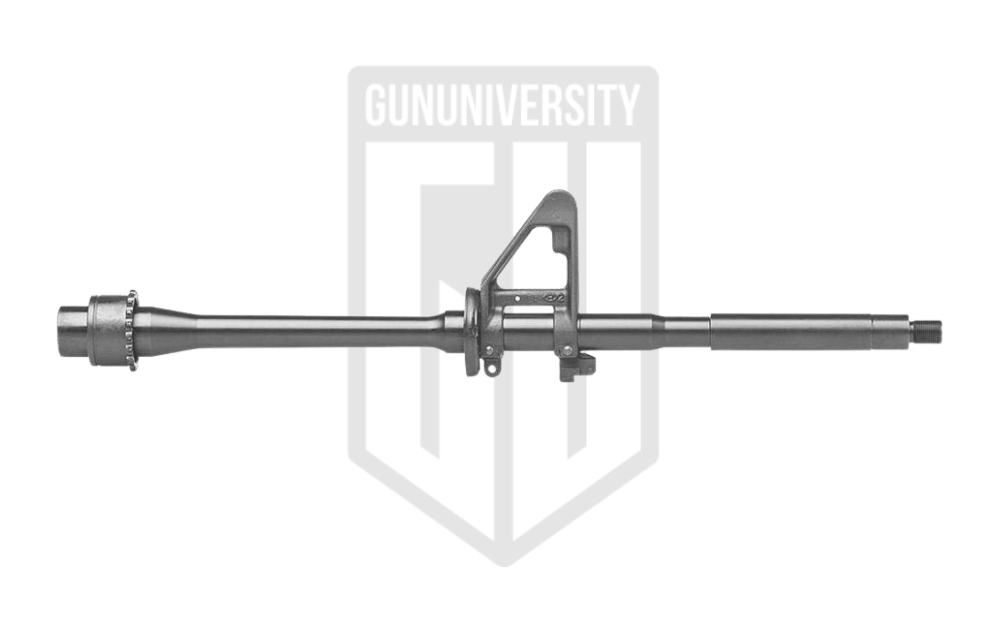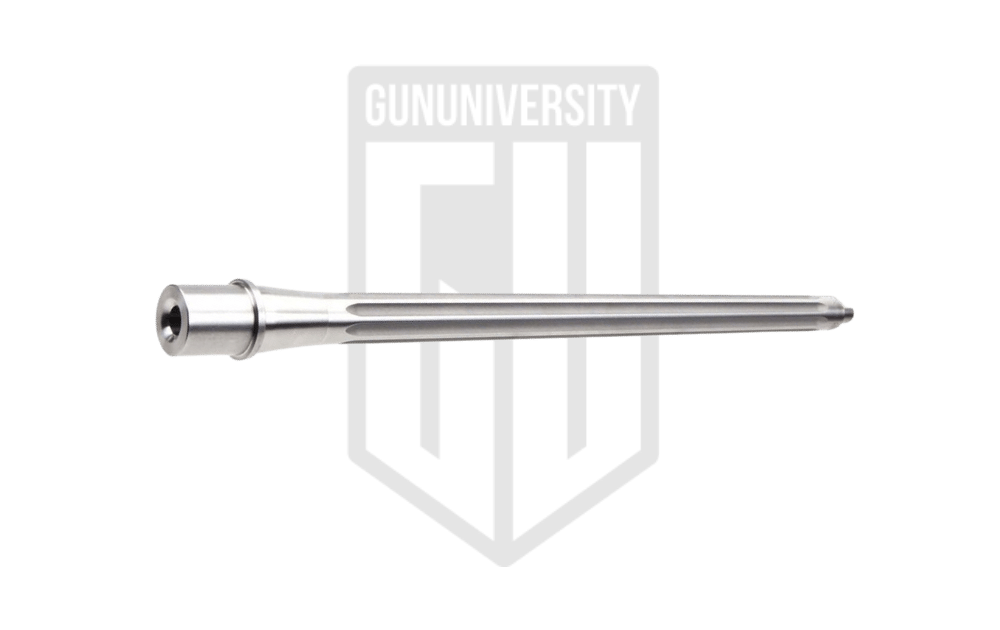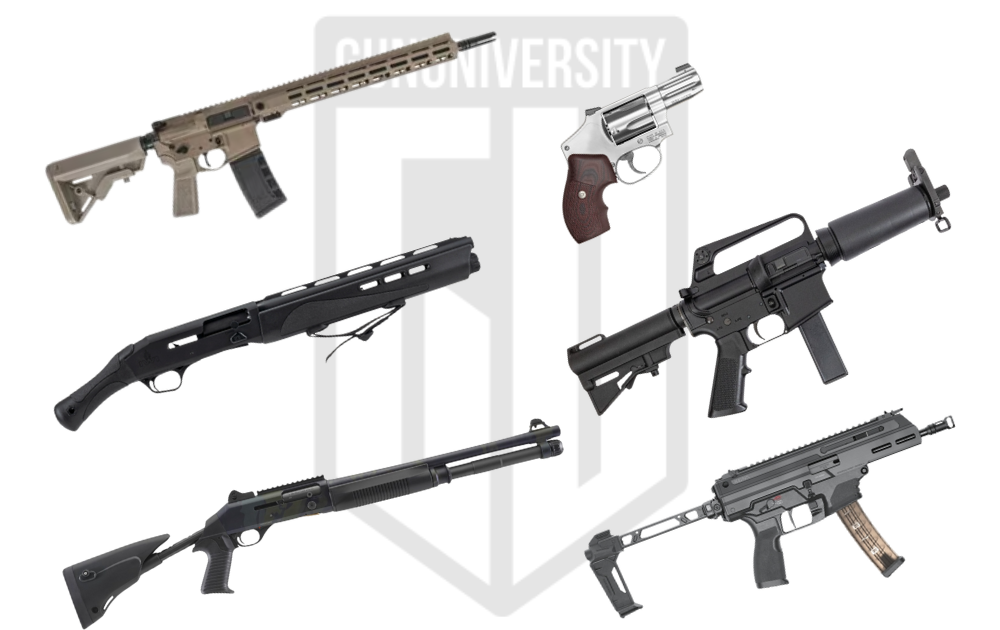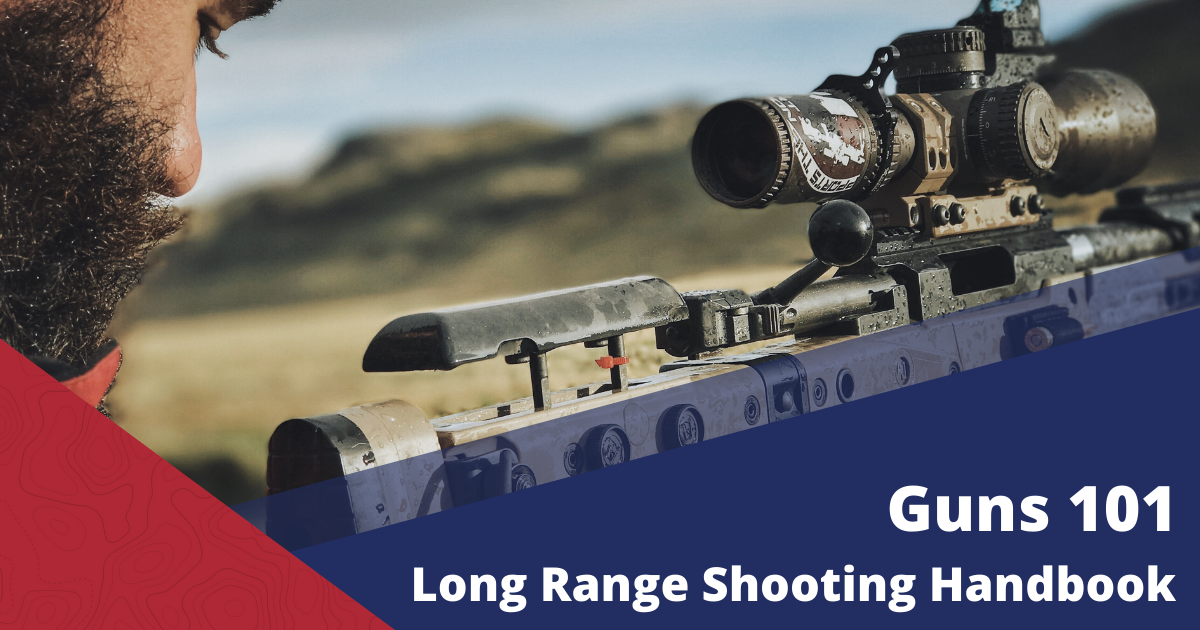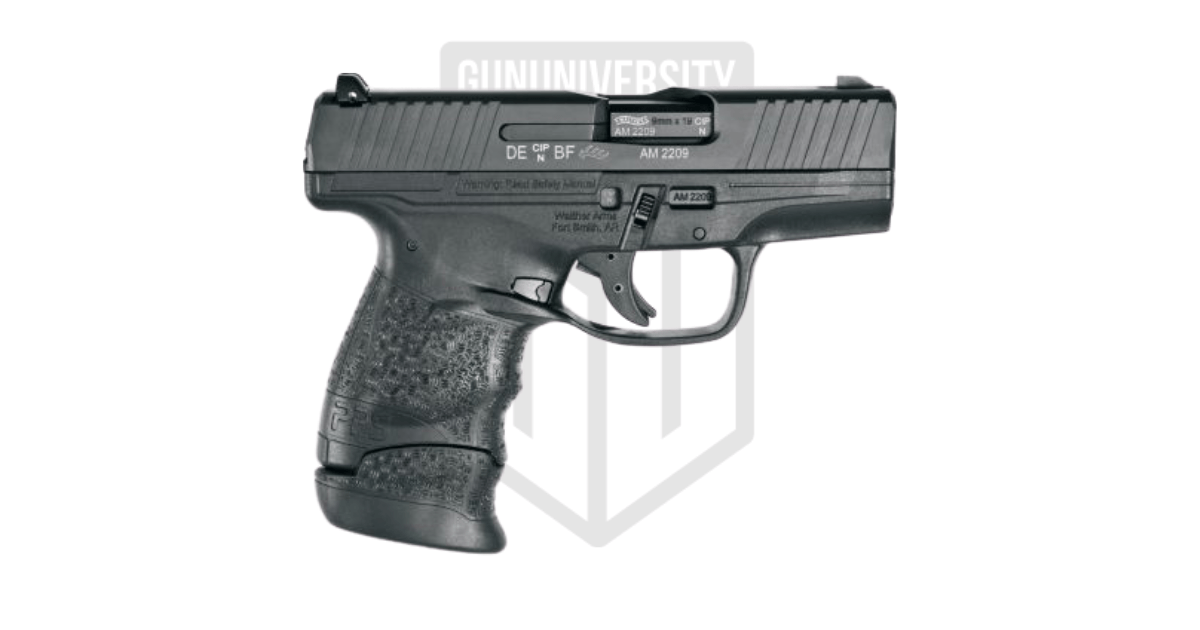Best AR-15 Barrels: Complete Guide!
In our continuing series on optimizing your AR 15, we are addressing the barrel of your weapon. The barrel plays an integral role in your weapon’s operation, legality, accuracy, caliber, and more. Like everything else in the AR 15 world, you have many choices. Barrels, in particular, can be challenging to choose because of the impact a barrel has on a weapon’s function, purpose, legality, accuracy, and caliber.
With that said, we’ve gathered the best barrels on the market to help you choose the best barrel for your chosen rifle. There are tons and tons of barrels on the market and tons of different ways to produce a barrel. There are a ton of factors that go into the production of an AR 15 barrel. Today we won’t just give you a list of great barrels and barrel makes, but we’ll also dive into the world of barrels.
By the time you finish this article, you’ll know how to pick the best barrel for you. A lot goes into the barrel, from its length to the material it’s made from to the inside of the barrel and how it’s rifled and coated. Don’t worry, though. You’ll be an expert before you know it.
Best AR-15 Barrels
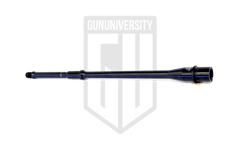 |
| Check Price | |
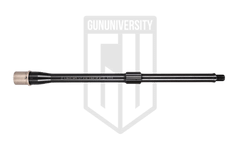 |
| Check Price | |
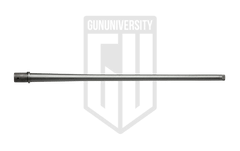 |
| Check Price | |
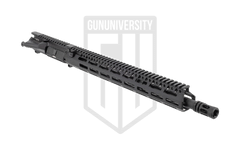 |
| Check Price | |
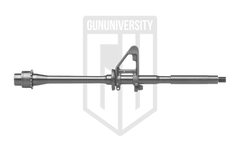 |
| Check Price | |
 |
| Check Price | |
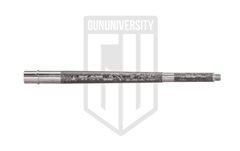 |
| Check Price |
Best AR-15 Barrels
- Faxon Pencil Barrels
- Ballistic Advantage Hanson Profile
- Daniel Defense Barrels
- BCM BFH Enhanced Lightweight Barrels
- Aero Precision 5.56 CMV Barrels with FSB
- Rainier Arms Ultramatch MOD2
- Proof Carbon Fiber Barrels
Best AR-15 Barrel Specifications
Below is a list of our Best AR-15 Barrels. Here we can compare and line up the specs from each of the products and help you make the best decision possible.
| Barrel | Length | Barrel Material | Finish |
|---|---|---|---|
| Faxon Pencil Barrels | 10.5 to 16 inches | 4150 CMV | Nitride |
| Ballistic Advantage | 8.3 to 18 | 4150 CMV | QPQ Corrosion Resistance |
| Daniel Defense Barrels | 10.3 to 18 inches | 4150 CMV | Mil-Spec |
| BCM BFH Enhanced Lightweight Barrels | 9 to 16 inches | 4150 CMV | Mil-Spec |
| Aero Precision 5.56 CMV Barrels with FSB | 10.5 to 20 inches | 4150 | QPQ Corrosion Resistant |
| Rainier Arms Ultramatch MOD2 | 4 to 20 inches | Stainless Steel | Stainless |
| Proof Carbon Fiber Barrels | 7 to 22 inches | Carbon Fiber and Stainless Steel | Carbon Fiber |
Best AR-15 Barrel Reviews
Now we’ve had an overview look at our list, let us take the time to individually review each item. In this section we’ll be revisiting our specs, speaking into the product and looking at the pros and cons.
Faxon Pencil Barrel Specs
- Lengths 10.5 to 16 inches
- Barrel Material 4150 CMV
- Finish Nitride
Faxon Pencil Barrels Review
Faxon makes a number of high-quality, well-made, and accurate barrels. My all-time favorite is the pencil barrels. The original M16 wore a pencil profile barrel and was light and handy. Ever since then, we have ruined it. Faxon perfected the pencil-thin barrel and ensured it’s stable, accurate, and capable. Faxon produces a variety of these barrels for those looking for a lightweight and handy carbine.
One of the original downsides to the M16 and early AR 15 barrel was the heat treating process wasn’t up to snuff, and they went with a heavier profile to fix that. Faxon figured out how to heat treat the barrels properly and ensure proper stress relief in the design to ensure the barrels are tough and ready.
These barrels are incredibly light, with a 16-inch model weighing only 1.2 pounds. Sixteen inches is an option, but so are 14.5 and 10.5-inch models, as well as a 16-inch version with a fixed muzzle device to keep things fairly light and short. Plenty of options for the pickiest builder. The Faxon barrel is the way to go if you want to keep your rifle light and easy to carry.
The downside is that these barrels do get hotter faster and might not be the best for a shooter who does massive ammo dumps. They are completely fine for 99% of users, but if you are running a registered full auto lower than the Faxon pencil barrels might not be the best choice.
Faxon uses 4150 CMV steel for tough and precise steel. These barrels feature an internal and external nitride finish for total toughness and awesome accuracy. The Faxon pencil barrels take us back to a day and time when guns were balanced and light and do so with style.
Faxon Pencil Barrel Product Pros and Cons
- Lightweight
- Available In Multiple Lengths
- Accurate and Tough
- Not Aggressive Firing Schedules
Faxon Pencil Barrel Deals
Ballistic Advantage Specs
- Lengths 8.3 to 18
- Barrel Material 4150 CMV
- Finish QPQ Corrosion Resistance
Ballistic Advantage Review
Ballistic Advantage is the mecha of high-quality barrels in various lengths and calibers that sell at an affordable price point. Ballistic Advantage produces a line of barrels called the BA Hanson line, and they are Ballistic Advantage’s barrel profile design. They design every barrel in the Hanson line around specific lengths and calibers to get the most performance with the lightest weight possible.
The tagline of the Hanson barrels is a lightweight design without lightweight performance. Hanson barrels aren’t quite pencil barrels. The standard 16-inch 5.56 model weighs 1.76 pounds, and that little extra weight strategically reinforces the barrel where necessary to ensure total performance.
The design keeps your gun light and handy but also ensures that those higher rates of fire and higher volume days won’t see the reductions in accuracy and barrel integrity. Compromise seems like a rude way to describe it because you are truly getting the best of both worlds at the cost of about half a pound.
Ballistic Advantage retained this unique Hanson design around every length and caliber barrel out there. This includes 12.5, 11.3, 10.5, and many more, and they come in calibers like .5.56, .300 Blackout, 6.5 Grendel, .350 Legend, and even AR 10 barrels in .308 and 6.5 Creedmoor. These are premium-grade barrels, and they aren’t budget-priced, but they are fairly affordable for the performance you are getting.
Ballistic Advantage uses 4150 Chrome moly to build the barrels, and they wear a corrosion-resistant finish. These are duty-style barrels designed for professional use. It’s a solid option for home defense, duty use, and any high-volume shooting sport.
Ballistic Advantage Pros and Cons
- Lightweight
- Durable
- Available in tons of calibers/lengths
- Hard to install other gas blocks
Ballistic Advantage Deals
Daniel Defense Barrel Specs
- Lengths 10.3 to 18 inches
- Barrel Material 4150 CMV
- Finish Mil-Spec
Daniel Defense Barrel Review
Daniel Defense is well known in the AR 15 world for its high-quality rifles designed to be top-tier guns. Daniel Defense makes its own parts and pieces, including the barrels. They are pretty famous for producing high-quality, cold hammer forged barrels designed for heavy-duty use and made to both Mil-Spec and Daniel Defense’s own specs.
These barrels come in a few different profiles, including lightweight, government, and Daniel Defense’s own Strength to Weight profile. They also produce a number of mil-spec barrels in various lengths perfectly suited for guys and gals looking to produce clone rifles.
Daniel Defense’s cold hammer forged barrels are designed to last nearly forever. Cold hammer forging introduces smooth barrel surfaces, especially when compared to standard barrels. These barrels provide more consistent precision for shot after shot performance. These barrels are also incredibly strong and durable for long-term performance.
Daniel Defense offers barrels in lengths perfect for replicating Mk18s, M4s, and various other rifles. This includes options with front sight bases, but that’s not mandatory. Cloners can certainly pick and choose the barrel you want for your specific build. While their military-worthy barrels are cool, don’t sleep on their S2W and LW profiles.
S2W stands for strength to weight ratio and is the design Daniel Defense uses for their rifle length 18-inch barrels. This profile stresses finding the right balance between weight and strength for accurate and consistent shots. The LW is the lightweight profile that helps reduce weight to make your gun balanced and handy but doesn’t lose the strength of a cold hammer forged barrel.
If you’re a 5.56 man, then you’ll be happy with the choices Daniel Defense offers, but if you want something a little different, you might end up disappointed. They don’t do much more than that. Daniel Defense offers you a limited but well-made selection of awesome barrels. From their own interesting and dynamic profiles to the military profiles that are all well proven, you’re covered.
Daniel Defense Barrel Pros and Cons
- Numerous Profiles
- Cold Hammer Forged Barrels
- Perfect for Cloners
- Limited Calibers
Daniel Defense Barrel Deals
BCM BFH Enhanced Specs
- Length 9 to 16 inches
- Barrel Material 4150 CMV
- Finish Mil-Spec
BCM BFH Enhanced Lightweight Barrel Review
Bravo Company makes some of the best rifles on the market for shooters looking for a rugged, well-made, and dependable rifle for defensive use, duty use, and beyond. When you buy a BCM rifle or component, you know you’re getting a rock-solid component, including the barrel. BCM produces all manner of barrel designs and types, and all are high quality, but today we are focusing on BCM’s Enhanced lightweight barrels.
Carbines shouldn’t be heavy, but you also shouldn’t compromise performance for a lightweight design. With the BCM BFH Enhanced Lightweight barrels, you don’t compromise anything. BCM does these barrels in two flavors, one is your standard, and the other introduces fluting to increase strength and heat dissipation. Fluting adds a little to the price but might be worth it.
The magic behind these barrels is the continuous taper design. This leads to the best combination of weight, balance, and performance. It keeps the barrels light and reinforces the area where the most heat and pressure resides. The tapered profile out front keeps things balanced and easy to maneuver.
BCM eliminates the stand sharp handguard cap shoulder, which results in better barrel harmonics, which ultimately lead to increased accuracy. The Enhanced Profile Barrels deliver a platform that’s well suited for duty and defense, as well as taking accurate long-range shots.
These barrels come in various lengths, ranging from 16 to 9 inches, and come in 5.56 and .300 Blackout. Sadly anything more specific is unavailable. The selection is limited caliber-wise, but between the various lengths and presence or lack of fluting, you’ll find something that works for you.
BCM BFH Enhanced Lightweight Barrel Pros and Cons
- Light and Durable
- Precise and Accurate
- Available in Fluted Models
- Limited Caliber selection
BCM BFH Enhanced Lightweight Barrel Deals
Aero Precision 5.56 CMV Specs
- Length 10.5 to 20 inches
- Barrel Material 4150
- Finish FQPQ Corrosion Resistant
Aero Precision 5.56 CMV Barrels with FSB Review
Sometimes you want to build a gun with a decent budget without sacrificing quality, or sometimes you want to build a clone without breaking the bank. If either of those situations applies to you, then Aero Precision offers a number of barrel designs perfect for your next build. Specifically the CMV barrel with the FSB gas block. Why? Well, let’s dig in.
The presence of an FSB covers your gas block and front sight costs covered with the cost of the barrel. Plus, if you are building on a budget, you are likely looking for an affordable handguard, and standard handguards from companies like Magpul make high-quality, modern, and affordable options.
The Aero Precision barrels with FSB offer you options to build a full-length rifle with a 20-inch barrel, a carbine with a 16 or 14.5-inch barrel, or even a shorty with a 10.5-inch barrel. The barrels are made from 4150 CMV steel, so they meet high-quality standards and are tough but precise. The barrels are HP, and MPI inspected to ensure the utmost quality before they leave the factory.
In terms of profile, they are mostly government and M4 profile barrels to allow for proper clone efforts. Aero Does make Pencil, DMR, SPR profiles, but those do lack the FSB but are also made for a different purpose. Caliber wise you only get 5.56.
If you don’t mind limited options and want an FSB, then the Aero Precision CMV barrels are perfect for you. If you don’t want the FSB but still want an affordable, high-quality barrel, then check out their other CMV barrels.
Aero Precision 5.56 CMV Pros and Cons
- Affordable
- Well Made
- Clone Ready
- Limited Options
- FSB doesn’t have a sight post
Aero Precision 5.56 CMV Deals
Rainier Arms Ultramatch MOD2 Specs
- Length 4 to 20 inches
- Barrel Material Stainless Steel
- Finish Stainless
Rainier Arms Ultramatch MOD2 Review
If price isn’t a big deal and you want a ton of accuracy, then the Rainier Arms Ultramatch MOD2 might be the barrel of choice for you. Rainier Arms designed the MOD2 from the ground up to provide consistency and accuracy at all ranges and in all situations. The Ultramatch MOD2 is a beastly barrel available for the SBR and DMR user and in a number of different calibers.
Accuracy standards vary between shooters, but these barrels consistently deliver MOA and SUB-MOA performance depending on caliber and the rest of the rifle. That’s quite accurate for an intermediate carbine. The use of stainless steel helps fuel that accuracy and gives the MOD2 a striking appearance.
Rainier Arms went with a proprietary profile to deliver exceptional accuracy, and there wasn’t much of a focus on saving weight, but the barrel remains somewhat lightweight for its length and size. These aren’t cheap, but they provide a lot of bang for your buck and are probably the most affordable precision barrels out there.
Rainier Arms produces these barrels in an absolute ton of lengths and calibers. This includes 9mm barrels as short as four inches long and .223 Wylde in 20-inch configurations. Along the way, we get common calibers like .300 Blackout and more precision-oriented blasters like the 6mm ARC. Plenty of options for shooters of all types.
If you want to drive tacks and produce tight and tiny groups, Rainier Arms has you covered with the Ultramatch MOD2 barrels.
Rainier Arms Ultramatch MOD2 Pros and Cons
- Super Accurate
- Awesome Proprietary Profile
- Numerous Calibers and Barrel Lengths
- Numerous Calibers and Barrel Lengths
Rainier Arms Ultramatch MOD2 Deals
Proof Carbon Fiber Specs
- Length 7 to 22 inches
- Barrel Material Carbon Fiber and Stainless Steel
- Finish Carbon Fiber
Proof Carbon Fiber Barrel Review
If money is truly not a problem, then let me introduce you to the most precision-driven barrels ever created, the Proof Carbon Fiber Barrels. They aren’t all carbon fiber, of course; they are mostly carbon fiber wrapped around a stainless steel barrel sleeve. The combination of the two materials provides a number of advantages we don’t see with other barrel materials.
The Proof Carbon Fiber Barrels are super lightweight, with a 16-inch AR 15 barrel in .223 Wylde weighing only one pound and eleven ounces total. That’s superbly light. Carbon fiber also allows for extreme temperature resistance when compared to other barrel materials. Heat dissipates faster, and barrels last longer.
Don’t let the lightweight design make you think these are weak barrels. Carbon fiber is quite strong and extremely durable. It’s a barrel system that will last without issue and without worry. The combination of carbon fiber and stainless steel helps keep things absurdly accurate and allows your AR to have unbeatable accuracy.
Proof Embraces a wide variety of calibers that include the norm like .223 Wylde and 300 Black, as well as 6mm ARC, 204 Ruger, and .224 Valkyrie. Barrel lengths vary wildly, with multiple options for most calibers.
What will stick in your craw is the price point. The MSRP of some of these barrels hit nearly a grand. That’s certainly not budget friendly for most shooters. Still, it’s a high-tech option that’s in the world of AR 15s.
Proof Carbon Fiber Pros and Cons
- Super Accurate
- Very Lightweight
- Multiple Calibers/Lengths
- Expensive with a Capital E.
Proof Carbon Fiber Barrels Deals
AR-15 Barrels – Buyers Guide
Now we get to the point where we discuss what goes into producing a barrel and how different features, construction designs, and other factors affect the barrel’s performance, lifespan, and overall purpose. This is focused on the AR 15, but a lot of the information can pass over to the AR 10 as well.
To FSB Or Not
The first decision you’ll need to make is whether or not you want an FSB. FSB stands for front sight base, and it’s the more traditional option and, for a period, was the most popular. An FSB barrel comes with a front sight and gas block installed onto the barrel. These are quite common and popular, especially in retro rifles and clone builds. FSB builds can be money-saving designs and often provide some savings with the presence of an FSB that doubles as a gas block.
FSB barrels can be difficult to install a free float handguard on, but not impossible. The presence of a nonmoving FSB can also be distracting when looking through an optic. A low-profile gas block allows you to more easily use a free-floating handguard. Plus, folding front sights won’t junk up your sight picture.
Barrel Length
Barrel length is often a choice you need to make that’s dependent on caliber choice. Some calibers do better with short barrels, and some calibers need a longer barrel to be effective. When choosing a barrel, make sure you consider length in relation to the performance of your caliber. .300 Blackout does great from a 9-inch barrel; 5.56, not so much.
The length of your barrel can affect how it handles. Shorter barrels make shorter guns, and shorter guns can be more maneuverable. Maneuverable weapons are handy for close quarters use and make exceptional defensive and duty weapons in a modern, urban environment. Longer barrels can impart more velocity and make your round more effective at various ranges. They also tend to be smoother shooters, especially in calibers like 5.56, 6mm ARC, and .224 Valkyrie.
In the United States, the National Firearms Act regulates firearms in a number of different ways, and one of those ways is through barrel length. In the United States, a rifle must have a16 inch long barrel to avoid being an NFA-regulated weapon. Any barrel shorter on an AR15 with a stock is a short-barreled rifle and requires a tax stamp and purchasing or building process. AR15s with barrels shorter than 16 inches can be configured as pistols without stocks without running afoul of the NFA.
Gas Systems
Barrel length can also affect your gas system. A shorter barrel often has a gas port closer to the breach, and a longer barrel has it further away. Gas systems rely on barrel length to ensure there is enough dwell time for the weapon to cycle reliably. This results in numerous gas system lengths, including rifle, mid, carbine, and pistol.
A rifle-length barrel that’s 18 to 20 inches long tends to be the most reliable and longest-lasting design. The longer gas system results in a less violent action with less pressure on the internal parts. Rifle-length gas systems tend to provide less recoil and ultimately be very smooth shooters.
Mid is somewhat new and popular on 16-inch barrels. It provides a good balance of gas system length and reliability. If I was building a 16-inch carbine, I’d go with mid-length for the increased reliability and decreased recoil and wear on parts.
Carbine length came to be as a way to make shorter AR15s function more reliably. The carbine length gas system was popularized on the M4 series rifles and tended to be the length of choice for 14.5 inches to 10.3 inch AR 15 barrels. Although on the 10.3 length barrels, the gas port is often wider to ensure reliability.
Finally, we have pistol length systems. These are typically used with ultra-short AR 15s in rifle calibers like .300 Blackout and even oddballs like 5.7 and 4.6 AR 15s.
Twist Rate
We call a rifle a rifle because inside the bore, and we have what we call rifling. Rifling is a series of lands and grooves that cause the bullet to rotate and stabilize as it travels through the barrel. A twist rate is how many inches of barrel are required to cause a bullet to rotate one time. Twist rate is expressed as a combination of two numbers and appears like this – 1:9.
That 1:9 twist rate means that the projectile rotates one time in nine inches. A lower second number means a faster twist rate. For example, a 1:7 twist rate rotates a projectile faster than a 1:12 twist rate. The twist rate is important to consider when you start looking at what projectile you intend to fire.
A lot of people will say you need a faster twist rate for a heavier bullet, and they are only partly right. You need a faster twist rate for longer projectiles. It’s just that longer projectiles tend to be heavier projectiles.
Choosing your twist rate goes back to identifying the caliber you’ve chosen for your rifle. Once you choose the caliber, you need to determine what weight of projectile you plan to shoot. Slight variances in twist rate and projectile weight aren’t a big deal but choose your twist rate based on the caliber you plan to use for important tasks.
If you have an Mk18 clone with a 10.3-inch barrel, then you likely want to use heavier projectiles for serious use. Those tend to work great with 1:7 twist rates. You’ll likely be shooting lighter weight, bulk package ammo for training and practice due to the cost of those expensive calibers. In this situation, you might shoot 62 grain more than 77 grain, but you want a twist rate that works best for the most important round you’ll use.
Barrel Profile
Most rifles don’t have different barrel profiles, but the AR15 is so popular it has almost half a dozen. Barrel profile is a set standard for different levels of width of the barrel at different points. Some profiles have a variety of different thin and thick points for different reasons. Here are a few of the more common barrel profiles
Pencil – Very thin and lightweight barrels. These were the original barrels used on the original AR15. Still popular with those who like a lightweight barrel.
Government – The government profile is a bit of an abomination designed because the military thought soldiers were bending barrels, so they reinforced different portions of the barrel to prevent this while still allowing for the mounting of M203 grenade launchers. This is a very popular profile but not extremely efficient.
Heavy – Heavy, HBAR or Bull barrels are all a type of AR15 barrel that emphasizes a heavy, less tapered design. These barrels are great for eating up heat and for long strings of fire. They are also popular with varmint hunters and long-range target shooters.
Fluted – Fluted barrels combine looks and function to create a light but rigid barrel. Weight is cut from the barrel in a strategic method. It’s a great option, but often an expensive one.
These are the most common barrel profiles, but there are a ton of different options from different companies. Bravo, Rainier Arms, and many others offer their own proprietary profile for different purposes.
Barrel Material
What is your barrel made from? Well, likely metal, but the type of metal can make a difference in the quality of the barrel as well as the price.
4140 – This is budget-grade steel that is fairly common and provides an affordable option for barrel use. It’s good enough in most departments but isn’t a steel you’ll see in rifles made for armed professionals. They aren’t as tough or as accurate as higher-end steels but are very affordable.
4150 CMV – By far, the most common type of steel used to produce AR15 barrels is 4150 Chromoly vanadium. This steel features a dose of Chromoly vanadium to add strength to the barrel and help it resist heat. This is the steel used by the United States military in their rifle barrels.
Stainless Steel – Stainless steel is typically reserved for those building an AR that prioritizes accuracy over anything else. These barrels ensure consistent accuracy and beat heat rather well. They tend to wear out faster than other barrels.
Carbon Fiber – When someone says carbon fiber, they mean a mix of a stainless steel barrel insert and a wrapping of carbon fiber. These barrels are another design for those who seek to maximize accuracy but also keep their weapons lightweight. They are perfect for long-range accuracy and tend to be extremely tough. The downside is the very high price point they toss at you.
Barrel Treatment
Barrels are exposed to intense heat, force, and pressure enduring their lifetime. As such, the inside of the barrel can be easily damaged, corroded, and degraded with a barrel treatment. These treatments vary, and each has its strengths and weaknesses.
Chrome Lined – Chrome line bores prevent corrosion and also do a fantastic job of resisting heat. They can impede accuracy to a small degree, but they result in a very tough bore overall.
Nitride/QPQ – Nitride and QPQ treatments provided excellent corrosion resistance and a decent amount of heat resistance. There is no impact on accuracy, but the finish isn’t as tough as chrome-lined bored.
Parkerized/Magnese Phosphate – Parkerized barrels are done inside and out to provide a tough finish that resists rust and won’t flake or be easily scratched off. It tends to be an affordable anti-corrosion option and can be paired with chrome lining.
Riding In a Barrel
Did you know there would be that much to consider when choosing a barrel? Admittedly it’s a lot of information, but it’s relevant and important to understand when you purchase or build a rifle. Hopefully, you are leaving here today knowing a thing or two about AR 15 barrels.
If you have any questions, ask below!
Recent Posts
December 20, 2025
December 15, 2025
December 15, 2025
December 12, 2025

